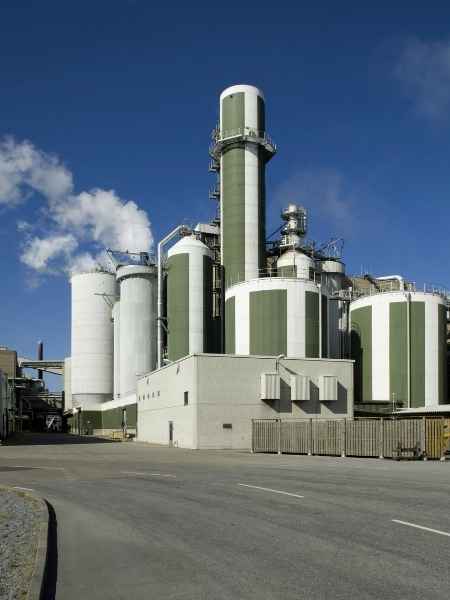In the pulp and paper industry, there is a lot of excitement about the potential of big data analytics and Industry 4.0 to optimize plant operations further. Driven by global demand, sustainability efforts, an aging workforce and margin pressures, the time has come for the pulp and paper industry to reap the full benefits of AI.
Industry 4.0 involves using digital technologies to create smart factories that are more efficient and responsive to customers’ needs. While manufacturers have long been using data analytics for process monitoring, fault detection and equipment health prognostics, these new tools represent the latest trends in manufacturing.
With the end goal of increasing levels of productivity, improving product quality, reducing scrap and lowering costs, simply put, big data delivers the insights and outcomes necessary for success. Digital technologies, like machine connectivity and intelligent automation, leverage big data and analytics to deliver these outcomes.

Many manufacturers are exploring these new technologies to gain a competitive edge in the market. However, digital transformation is still uncharted territory for most pulp & paper companies. Only 15 percent of endeavors are eventually deployed successfully in production, often due to the lack of a clear priority and resources, both the people and the investment levels to succeed. While technology lays the groundwork for managing and analyzing this data, success is dependent on people using the resulting insight, and that is where the challenge lies and state-of-the-art AI platforms have helped.
The pulp and paper industry is striving to become more digital but lags behind other sectors in its application of these technologies. TAPPI’s recent survey on pulp and paper manufacturing practices found that 36 percent of pulp and paper manufacturers were already using some type of Industry 4.0 technology (automation, connected devices, robotics), an increase from 25 percent in 2016. However, except for automation systems (21 percent), few pulp and paper producers reported significant impacts from their investments in smart factory technologies: 51 percent said their investment had a minimal impact on productivity and only four percent said they experienced substantial gains in productivity (defined as anything more than 10 percent). In addition, only 16 percent reported gains in quality with Industry 4.0 applications.

The pulp and paper industry is lagging behind other sectors in applying Industry 4.0 technologies like big data analytics, robotics, and connected devices. As a result, manufacturers are struggling to find ways to harness the power of these new technologies without sacrificing the principles that have made pulp and paper companies successful for more than a century. Nevertheless, pulp and paper producers need to recognize the potential impact of these new tools. If a company does not adopt these new technologies quickly enough, competitors will gain a significant advantage in the market, with respect to raw material costs, quality to specification, and consistent downstream customer satisfaction.
There is a perception that the pulp and paper industry is behind other sectors somehow. Still, I believe the reality is that we are not behind, as there are significant activities of thought leaders, and entrepreneurs entering our industry. There are demonstrations occurring throughout our industry that are proving the real financial benefits of predictive and constantly updated machine learning.
True AI is only a breath away. I also do not think that perceptions are important. What is essential, at least to me, is that pulp and paper producers invest in whatever they believe provides them with a competitive advantage. And if that is Industry 4.0 technologies, so be it!
The savings and cost justifications for investment in AI and smart manufacturing are multi-fold: chemical savings, energy savings, reduction in waste production, all of which will translate to higher yield, and overall reduced raw material costs. In addition, the pulp and paper industry is fascinated by big data analytics and Industry 4.0 – researchers expect AI to be an important driver of technological change in pulp and paper production within the next three years. However, pulp and paper producers are struggling to find ways to harness the power of these new technologies without sacrificing the principles that have made pulp and paper companies successful for more than 100 years – improved labor density and material efficiency.
Ultimately, it gives engineers and operators the tools to solve problems proactively rather than constantly fighting fires. We see many mills that are so lean, particularly with respect to real domain knowledge. Those who are present are continually fighting the fires of keeping the sheet on the reel, resulting in little time for continuous improvement, let alone step-change improvement. The promise here is that these industry 4.0 tools will free up the personnel and take them away from the fires that will douse themselves. The result is that talented staff members can work on the next thing.
Today, there many examples where AI and ML platforms have demonstrated a tremendous ability to deliver highly predictive outcomes before they happen, resulting in optimizing operations and delivering material cost savings. It is satisfying to see the growing application of advanced technologies across the pulp and paper industry. In addition, we are now seeing compelling use case studies which should convince industry executives of the benefits of jumping into the Industry 4.0 world. Good luck with your own operational issues, stay safe, and keep the sheet on the reel.

Dr. Chris Luettgen
Georgia Tech
Professor of the Practice, Chemical and Biomolecular Engineering College of Engineering; Associate Director, Pulp and Paper Renewable Bioproducts Institute; Director, Georgia Tech Pulp and Paper Engineering, Undergraduate Certificate Program and Foundation
Dr. Luettgen’s research focus is on relevant areas of need for the pulp and paper industry – both in continuously improving existing technologies and in transformational research. Specific areas of research include improved operational excellence of pulp/paper mill technologies; recycled fiber and global wastepaper sourcing; renewable cellulosic feedstock such as bio-based replacements of petro-based products and alternatively sourced bio materials; nanocellulose fibril and crystal applications for enhanced product performance; tissue manufacturing; and big data analytics and predictive process control.

